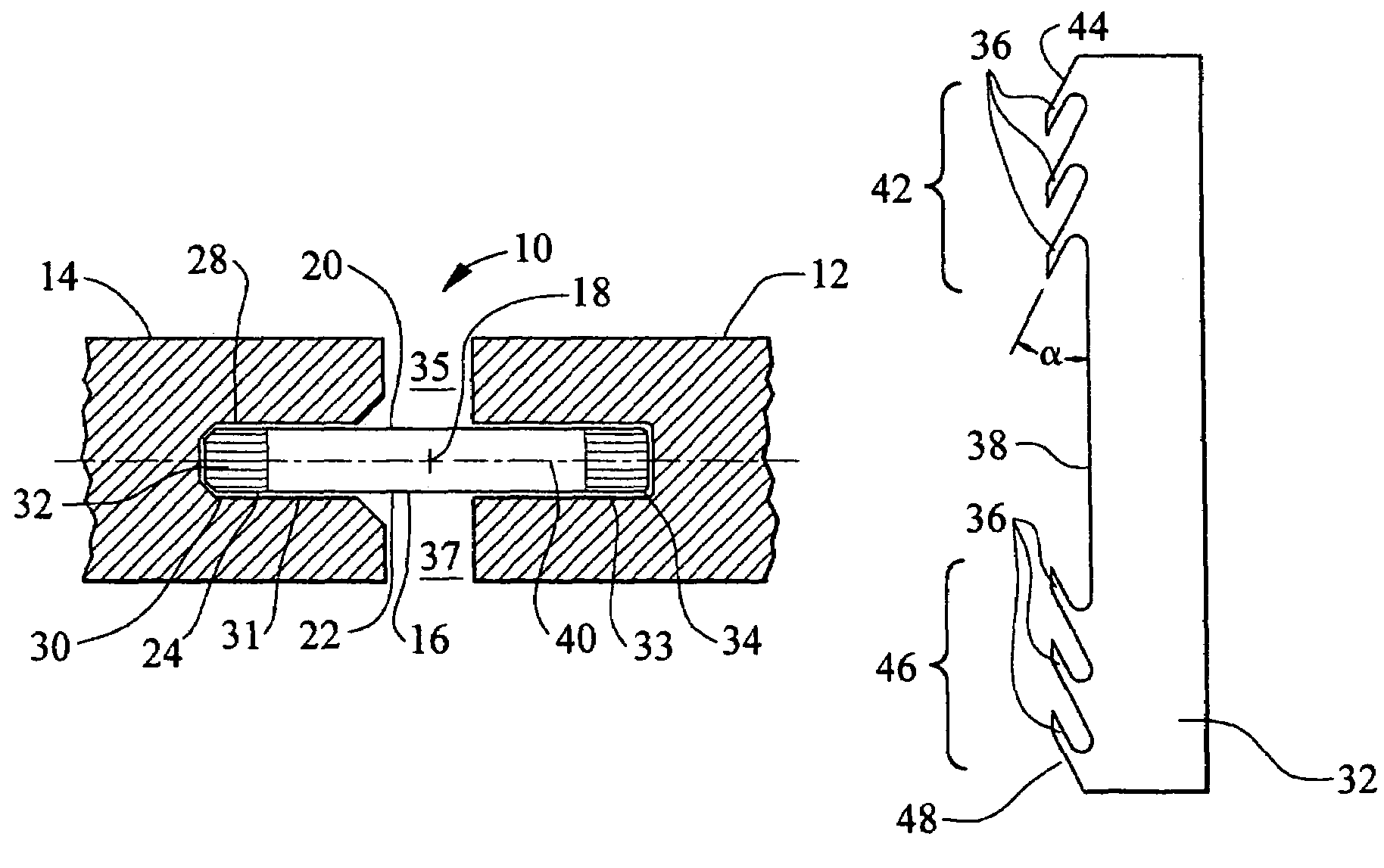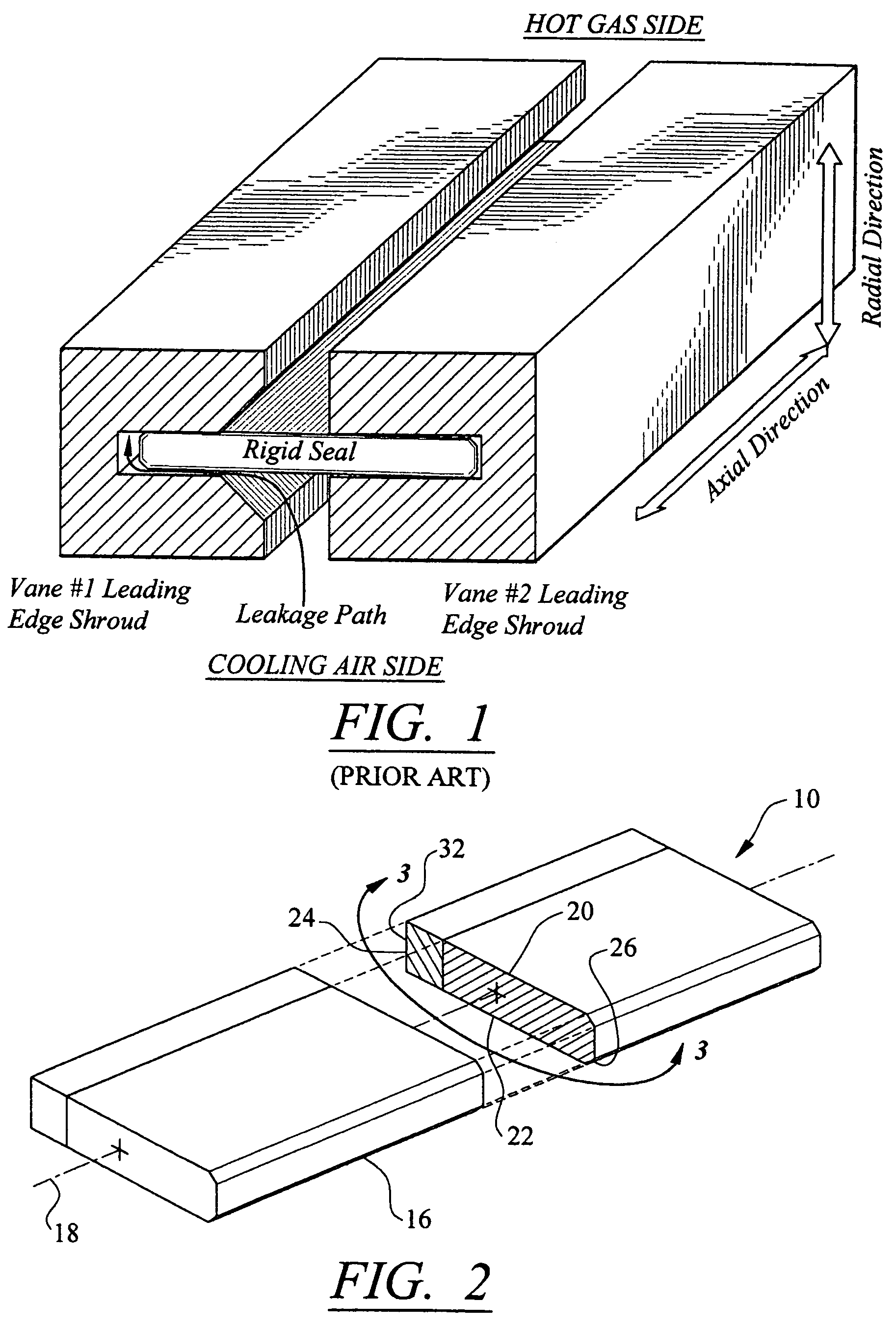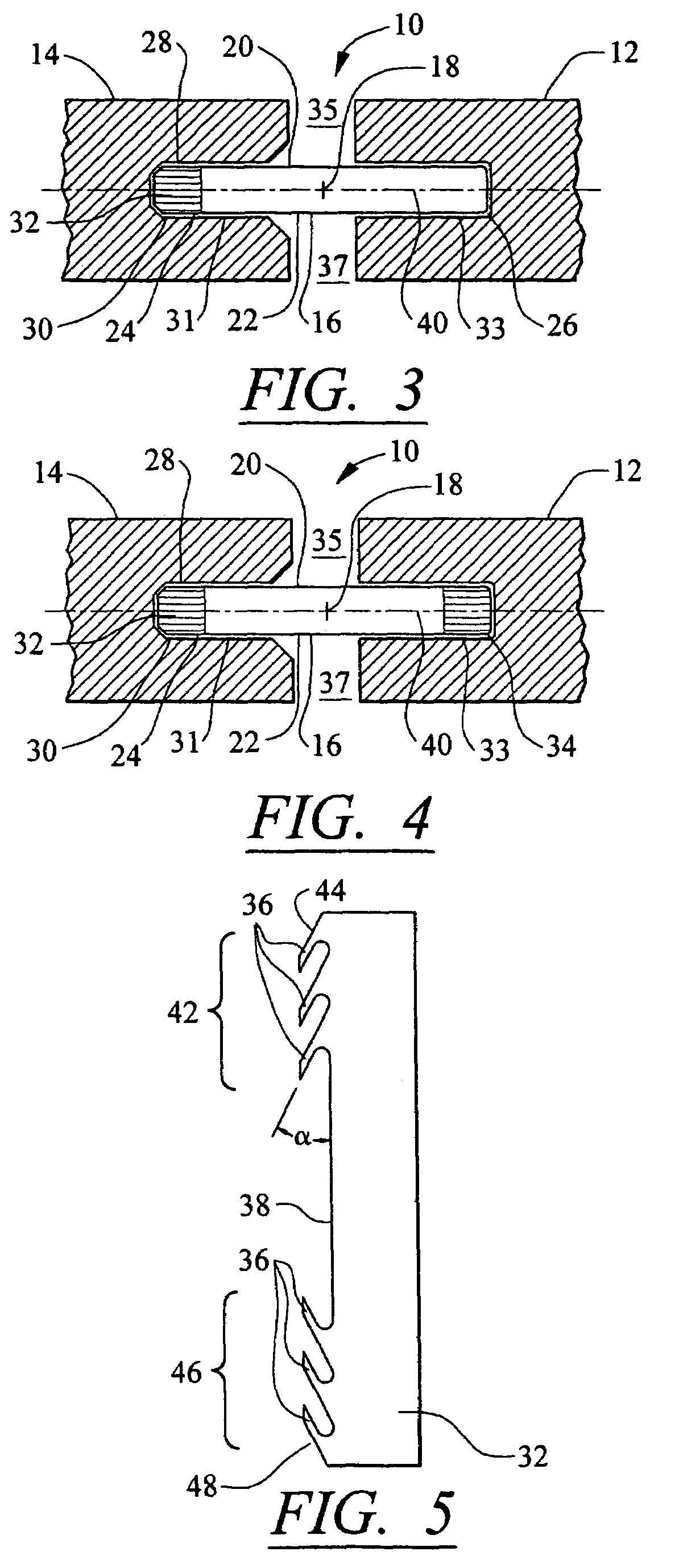Seal usable between thermally movable components
a technology of moving components and sealing, which is applied in the direction of machines/engines, liquid fuel engines, light and heating apparatus, etc., can solve the problems of conventional sealing, affecting engine performance, and reducing engine performance, so as to reduce leakage, reduce gap, and increase engine efficiency
- Summary
- Abstract
- Description
- Claims
- Application Information
AI Technical Summary
Benefits of technology
Problems solved by technology
Method used
Image
Examples
Embodiment Construction
[0021]As shown in FIGS. 2-10, this invention is directed to a seal 10 usable between two thermally movable components 12 and 14. In at least one embodiment, the seal 10 may be used to seal components of a turbine engine. For instance, the seal 10 may be used to seal components of a turbine engine in which the thermally movable components 12 and 14 may be, but are not limited to, leading edge shrouds, isolation rings, ring segments, and vane segments. In a turbine engine, the seal 10 may be used to prevent cooling air from mixing with combustion gases. In addition, as shown in FIGS. 2 and 3, the seal 10 may be formed from a body 16 having a longitudinal axis 18 and be configured for sealing space between adjacent components to prevent fluid from passing between adjacent components 12 and 14. The body 16 may be formed from rigid materials capable of withstanding the environment in which it is placed, which may include hot combustion gases. In at least one embodiment, the longitudinal ...
PUM
 Login to View More
Login to View More Abstract
Description
Claims
Application Information
 Login to View More
Login to View More - R&D
- Intellectual Property
- Life Sciences
- Materials
- Tech Scout
- Unparalleled Data Quality
- Higher Quality Content
- 60% Fewer Hallucinations
Browse by: Latest US Patents, China's latest patents, Technical Efficacy Thesaurus, Application Domain, Technology Topic, Popular Technical Reports.
© 2025 PatSnap. All rights reserved.Legal|Privacy policy|Modern Slavery Act Transparency Statement|Sitemap|About US| Contact US: help@patsnap.com



